Académie Internationale de Management en Hôtellerie & Tourisme

Conçus et élaborés pour garantir une réussite professionnelle
avec la participation des plus grandes chaînes hôtelières internationales en partenariat avec AHLEI,
et dispensés par un corps d’enseignant d’exception.
This course presents a systematic approach to managing Rooms Department in large and luxury international hotels by detailing the flow of business from the reservations process to check-out and account settlement. The course also examines the various elements of effective Housekeeping Management, paying particular attention to the planning and Human Resources Management.
[ TOPICS ]

Whatever the place and time, the Arts de La Table and restaurant service are the vectors of guest satisfaction during any gastronomic experience.
This multi sensorial experience requires the restaurant team members to master various service techniques, and acquire Food & Beverage product knowledge, both essential in order to keep under control the five senses leading each customer to satisfaction. They also need to develop a sixth one to measure the feelings of their guests at all time, and enhance this experience by providing a perfect choreography of the different actors involved in service, harmoniously linking their different functions. By comparing the evolution of food consumption patterns with the evolution of societal structures, the student should be able to analyze the evolution of trends in restaurant formulas. Final assessment takes place at the Ritz Paris, where students will be confronted, in teams, to a serie of real case scenarios.
[ TOPICS ]
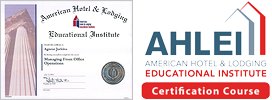

Covers the principles and procedures involved in an effective food and beverage control system, including standards determination, the operating budget, cost-volume-profit analysis, income and cost control, menu pricing, theft prevention, labor cost control, and computer applications.
[ TOPICS ]


This course presents a systematic approach to front office procedures by detailing the flow of business through a hotel, from the reservations process to check-out and account settlement. The course also examines the various elements of effective front office management, paying particular attention to the planning and evaluation of front office operations and to human resources management. Front office procedures and management are placed within the context of the overall operation of a hotel.
[ TOPICS ]


Covers such areas as specialized accounting for hotel revenue and expenses; accounting for inventory, property, and equipment; hospitality payroll accounting; hotel departmental financial statements; the income statement, balance sheet, and statement of cash flows; the analysis of financial statements; interim and annual reports; budgeting expenses; forecasting sales; budgetary reporting and analysis; and financial decision-making.
[ Contents ]


Provides an awareness of the rights and responsibilities that the law grants to or imposes upon a hotelkeeper, and illustrates the possible consequences of failure to satisfy legal obligations.
At the completion of this course, students should be able to:


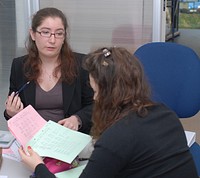
Students should already be familiar with financial accounting concepts and procedures,
This course presents managerial accounting concepts and explains how they apply to specific operations within the hospitality industry.
At the completion of this course, students should be able to:


 This course is designed to provide students with a solid background in hospitality sales and marketing. The main focus is on practical sales techniques for selling to targeted markets.
This course is designed to provide students with a solid background in hospitality sales and marketing. The main focus is on practical sales techniques for selling to targeted markets.
At the completion of this course, students should be able to:


This course provides students with practical skills and knowledge for effective management of food service operations. It presents basic service principles while emphasizing the importance of meeting and, whenever possible, exceeding the expectations of guests.
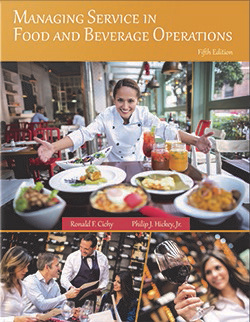


Defines the scope and segmentation of the convention and group business market, describes marketing and sales strategies to attract markets with specific needs, and explains techniques to meet those needs as part of meeting and convention service.
At the completion of this course, students should be able to:


Offers a complete approach to the operation of resort properties. Beginning with the resort concept and the historical development of resorts, the course then covers the planning, development, management, marketing, and financial aspects of the resort business. The course also examines the future outlook for resorts and the impact of the condominium concept, timesharing, technological change, “green” initiatives, and eco-tourism.


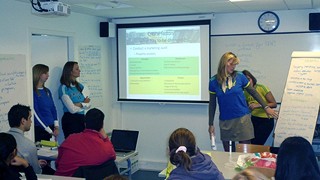
Widely accepted in all leading business schools as the ultimate experience-building methodology, case studies constitute the core of the Marketing and Sales course for Master of Science and BS 3rd year students.
Students are expected to have previously become familiar with the key foundations of strategic and operational marketing plans. Contrary to a lecture-based approach, the whole program will be dedicated discussing many real-life situations in the hospitality industry. Students have a unique chance of sitting “in the driver’s seat” to identify, analyze and recommend solutions amongst a large variety of challenging situations in hotel management, restaurants and the tourism industry at large.
The key benefits to the students will be:


This certification course presents the Hazard Analysis Critical Control Point (HACCP) method of food safety in a systematic, understandable format. Clearly defined terms, detailed lists of food safety responsibilities, and checklists for all control points make this a resource that can be readily put into practice in any food and beverage operation.
The textbook of the course is highly recommended to international readers.
New information in the second edition includes:
- Updated statistics from the Centers for Disease Control and Prevention (CDC)
- Discussion of major food allergens
- New time-temperature control for safety of potentially hazardous foods
- Updated sequence for hand washing and avoiding recontamination of hands
- New information on risk-based inspections, addressing risk categories, methodologies, and the food establishment inspection report
Presents a systems approach to food safety that answers public health concerns, reduces sanitation risks, and ensures satisfaction for food establishment guests, staff members, and owners. Explains how to define and implement sanitation quality, cost control, and risk reduction standards in a food service operation.
At the completion of this course, students should be able to:
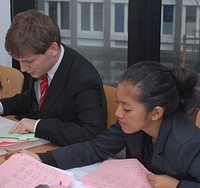
This course has a singular objective -the building of confidence in staff and line personnel to manage a restaurant more effectively. This confidence and broadened understanding is required to communicate with other strategic business unit managers in expanding and more competitive marketplaces.
Three major business skills are communication, analysis and decision-making. This program will focus upon recognition, distinction, and development of these skills. Useful models will be presented and, to add a distinctive difference, the Cornell Restaurant Administration Strategic Exercise will be employed to require continuous application of skills by the participants.
The program audience is the future restaurant managers and supporting staffs in the field. The participants should have a desire to pursue the study of marketing, human resources, accounting and operating issues. The central theme of managerial effectiveness will be profitability.
The course will provide the opportunity for participants to:


This course describes how to develop and implement an effective purchasing program, focusing on issues pertaining to supplier relations and selection, negotiation, and evaluation. The course includes in-depth material regarding major categories of purchases.
[ TOPICS ]

To familiarise students with the main issues concerning the concepts and techniques of Strategic Management, such as the Development of a Strategic Vision, Industry and Competitive Analysis, Strategy and Competitive Advantage, Implementing and Evaluating Corporate Strategy, etc. Through the extensive use of real-life case studies and examples, students are expected to use the tools and concepts of strategy analysis in crafting strategic action plans, and in figuring out successful ways to implement and execute the chosen strategy.
I) AN INTRODUCTION TO THE STRATEGIC MANAGEMENT PROCESS
-The Strategic Management Process: An Overview
II) INDUSTRY AND COMPETITIVE ANALYSIS
- The Methods of Industry and Competitive Analysis
III) EVALUATING COMPANY RESOURCES AND COMPETITIVE CAPABILITIES
- SWOT Analysis
- Other Methods
IV) ATTAINING COMPETITIVE ADVANTAGE THROUGH STRATEGY
- Corporate Level Strategies
- Business Unit Strategies: The five main Competitive Strategies
- Strategies for Diversified Firms
- Matching Strategy to the Company's Situation
Course Tutor: Christopher Lambridis
MA Industrial Relations, University of Warwick
[ BASIC BIBLIOGRAPHY ]
Main Course-book:
Thompson A.A. & Strickland A.J. (2001), Strategic Management: Concepts and Cases, McGraw-Hill International Editions
Additional Sources:
Johnson G & Scholes K (1999), Exploring Corporate Strategy: Text and Cases, Prentice Hall Europe
Wright P., Kroll M. J., and Parnell J. (1998), Strategic Management: Concepts and Cases, Upper Saddle River: Prentice Hall
Moore J. I. (2001), Writers on Strategy and Strategic Management, London: Penguin Business
The Cornell Hotel Administration Strategic Exercise, the CHASE, will allow the student the opportunity to boldly explore the marketing and management of a hotel operation in such an economy without the usual and attendant risks of failure.
The student may even reap the joys of a financial success!
Hotel management begins with understanding the customer. This is the foundation of marketing - understanding the customer and the reasons for traveling away from home, selecting a hotel, and choosing a specific accommodation.
There are many surveys of important marketing factors:
 Cleanliness
Cleanliness
Ease of placing a reservation
Guest room servicing during stay
Price
Courtesy and friendliness of the staff
Accessibility of shops, recreation or gaming facilities
Atmosphere
Speed of check-in and check-out
Amenities
The CHASE models a lodging environment. The learning objectives involve experience with strategic positioning, marketing attributes, financial reporting, operations analysis, and profit forecasting among competing properties. It is the sense of competition that engages the discovery objectives.
When the game begins the student will be one member of an executive committee responsible for directing the hotel. The challenge is to make key decisions about the factors above in concert with other members of the committee. Within the common trading area there will be several hotels in competition with the student’s. The managers of these operations will be making similar plans in their attempts to be profitable, and most likely attempting to be more profitable than the student’s enterprise.
Competition will be keen.
After each market planning session, rates advertised and staff trained, the public can react and make their decisions about patronage. An information system will be used to speed up the customers’ reaction time and reduce an accounting period of three months to a few moments. The student’s executive committee will then receive a variety of reports on the operating, competitive, and financial condition. Just as in managing a hotel, the student’s task will be to communicate, analyze, and make fresh decisions to improve the customers’ satisfaction, the financial condition, and the enhanced understanding of lodging management.
At the conclusion of the exercise the student’s management team will be responsible for reporting about the actions, key marketing decisions, financial strategies, the successes, failures, and what may be taken forward from this management experience in the CHASE.
Robert Chase, author of the CHASE, pictures management games as electronic case studies. In the case method of instruction, the teacher’s role is to maximize discussion among students and to stimulate further discussion with feedback. Within the management game, experiential feedback is provided by an economic model producing periodic operating and financial information. Additional feedback and knowledge extension is guided by the facilitator as with traditional case instruction.
Through the evolution of periodic decisions and outcomes, the attendee will gain appreciation for the nature of hotel management, the risks involved, and the necessity for business skills and acumen gained through discovery instruction.
The internet is an increasing important channel for hotels as expert’s project that 20-25% of a hotel’s revenue will be generated through the Net. The course provides future hoteliers with an overview for capitalizing on this medium.
The first half of the course focuses on e-marketing techniques designed to acquire direct bookings. The second half discusses online distribution intended to generate bookings through reseller sites.


This program explores key issues in international hospitality. Readers will learn about new trends and developments that have changed the context of global hotel operations and management and explore international policies affecting travel, tourism, and hospitality development.
Topics include: Trends in global distribution systems, sustainable development, new hotel products, and consumer demographics
Growth and importance of China, India, and the Middle East as destinations for hotel development and management
Country-specific policies regarding investment regulations, visa programs, hotel classification systems, and travel advisories.
This course provides the background every hospitality student will need in today’s rapidly changing global marketplace. It introduces students to issues involved in planning, developing, marketing, and managing hotels in the international arena. It also gives students a solid foundation for understanding and managing cultural diversity in the workplace, and underscores the importance of protocol in international interactions.
Objectives: At the completion of this course, students should be able to:


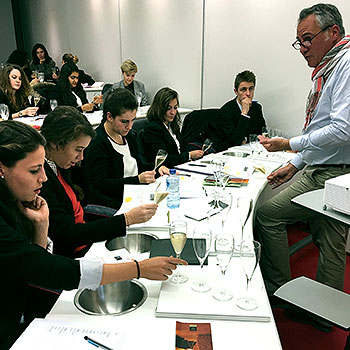
This course lays the groundwork for a basic understanding of beverage operations by explaining the beverage service process, describing the types of positions commonly found in beverage operations, and focusing on such beverages as beer, spirits, and wine. Included in the course are instructions on responsible alcohol service, supervisory techniques, and procedures for entry-level beverage service positions.


The program presents financial accounting concepts and shows how they apply to the hospitality industry. It incorporates the most recent formats, information, and schedules from the newly-published Uniform Systems of Accounts for the Lodging Industry.
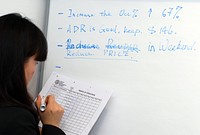
This course presents basic financial accounting concepts and explains how they apply to the hospitality industry.


Provides an overview of the information needs of lodging properties and food service establishments; addresses essential aspects of computer systems, such as hardware, software, and generic applications; focuses on computer-based property management systems for both front office and back office functions; examines features of computerized restaurant management systems; describes hotel sales computer applications, revenue management strategies, and accounting applications; addresses the selection and implementation of computer systems; focuses on managing information systems; and examines the impact of the Internet and private intranets on the hospitality industry.
At the completion of this course, students should be able to:


 The certification program of the Club Managers Association of America guided the content development of this course, which introduces participants to the complex world of private club management.
The certification program of the Club Managers Association of America guided the content development of this course, which introduces participants to the complex world of private club management.
Contributors are hospitality educators and industry professionals with expertise in the area of club management.
The program includes new facts on membership marketing, training and development, and club entertainment, as well as expanded treatment of club recreation, including golf course maintenance. The class work also incorporates information from the Uniform System of Financial Reporting for Clubs.
This course introduces students to the world of private club management. There are chapters on club boards of directors, service excellence in clubs, leadership in club operations, quality management systems for clubs, strategic management in clubs, club marketing, managing human resources in clubs, food and beverage operations in clubs, club financial management, club computer systems, golf operations in clubs, and club fitness operations.


This course takes a management perspective in introducing students to the organization and structure of hotels, restaurants, clubs, cruise ships, and casino hotels. There are chapters on business ethics, franchising, management contracts, and areas of management responsibility such as human resources, marketing and sales, and advertising.

[ Contents ]


This course presents a systematic approach to front office procedures by detailing the flow of business through a hotel, from the reservations process to check-out and account settlement. The course also examines the various elements of effective front office management, paying particular attention to the planning and evaluation of front office operations and to human resources management. Front office procedures and management are placed within the context of the overall operation of a hotel.
[ Contents ]


This course presents a systematic approach to managing housekeeping operations in the hospitality industry.
[ Contents ]


This course provides a thorough look at training by addressing how to assess and analyze the training needs of new and established operations; look upon training and development as an investment; use training tools and techniques; train with technology; measure and evaluate training; and use different training techniques when training employees, supervisors, and managers.
[ CONTENTS ]

To provide students with a means of understanding individual and group behaviour in work organisations. In this context, key issues such as Job Design, Group Dynamics, Organisational Structure and Culture are examined. The extensive use of problem-solving case studies is destined to help students develop the critical thinking required to uncover the realities of organisational life.
I) INTRODUCTION
- An introduction to Organisational Behaviour
II) THE INDIVIDUAL
- Decision Making
- Motivation
- Job Design
III) THE GROUP
- Groups and Team-Building
- Leadership and Management Style
- Power in Organisations
- Organisational Politics
- Conflict in Organisations
IV) THE ORGANISATION
- Organisational Structure and Design
- Organisational Culture
- Organisational Change and Development
- Technology and Organisation
- Gender Relations at work
Course Tutor: Christopher Lambridis
MA Industrial Relations, University of Warwick
[ BASIC BIBLIOGRAPHY ]
Main Course-book:
McKenna E. (2001), Business Psychology and Organisational Behaviour,
Hove: Lawrence Erlbaum Associates Additional
Sources:
Arnold J., Cooper C. & Robertson I. T. (1995), Work Psychology: Understanding Human Behaviour in the Workplace, London: Pitman Publishing
To provide students with an understanding of how dimensions of different national cultures can influence the behaviour of individuals and groups in social and business settings. In this context, the interaction of work organisations, structure and culture is also examined. Furthermore, intercultural management and its role towards managing cultural diversity in international corporations is analysed, while methods of developing intercultural managers such as cross-cultural training, are identified and discussed.
I) INTRODUCTION
- Definition of Culture
- National Culture Differences
II) DIMENSIONS OF NATIONAL CULTURES
- The power distance dimension
- Individualism vs. Collectivism
- Masculinity and Femininity in National Cultures
- Uncertainty avoidance
- Short-term and Long-term orientation
III) ORGANISATIONS, STRUCTURE AND CULTURE
- The relationship between national cultures and organisational structure
- The international dimension of Organisational Culture
IV) INTERCULTURAL MANAGEMENT: MANAGING CULTURAL DIVERSITY
- Cultural Shock and Acculturation
- Building the Intercultural Manager
- Cross-cultural Training
- International Business Ethics
- Culture and Patronage
- Concluding remarks - discussion
[ Main Course-book ]
Hofstede, G. (1994) Cultures and Organisations: Intercultural Co-operation and its Importance for Survival. London: Harper Collins


This course presents a systematic approach to human resources management in the hospitality industry. Students will analyze contemporary issues and practices, as well as employment laws that have an impact on the way people are managed.
[ TOPICS ]


This course presents a systematic approach to managing housekeeping operations in the hospitality industry.
[ Contents ]
This course is designed to acquaint students with leadership, management, and quality issues facing today's hospitality industry. There are chapters on the Malcolm Baldrige National Quality Award, continuous improvement, quality service, power and empowerment, communication skills, goal setting, high-performance teams, diversity, managing organizational change, and strategic career planning.
[ Contents ]
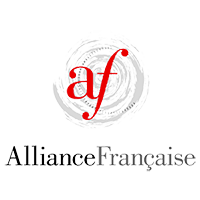
L’AIM incite chaque année des élèves étrangers non francophones – plus de la moitié de ses effectifs – à poursuivre leurs études en France.
Encouragés par un cursus en anglais qui favorise leur venue dans un pays dont la langue reste à maîtriser, ces étudiants désireux de bénéficier des atouts culturels de la France privilégient celle-ci plutôt que les pays anglophones.
Issus d’ un partenariat avec l’Alliance française, institution de renommée internationale, des cours du soir dispensés au moins deux fois par semaine, offrent un excellent enseignement écrit et oral de la langue et de la culture françaises.
Un test de niveau détermine l’intégration de chacun dans la classe la plus appropriée en fonction de ses connaissances initiales. Son suivi régulier est transmis, dans le cadre d’une étroite collaboration, à l’équipe pédagogique de l’AIM.
À la fin de leurs études, les étudiants ont acquis le français,extrêmement utile dans le milieu hôtelier, et emportent ainsi au retour dans leur pays, un peu de la France à travers le monde.

This course familiarizes students with the most common office softwares, such as Word, Excel and Powerpoint and optimizes their knowledge in the preparation of business documents, presentations and projects.
The computer room is specifically designed for effective training with powerful computers equipped with up to date, topnotch professional softwares.

Ce cours constitue la suite du programme I dans lequel ont été enseignées la notion de risques et la démarche visant à les maîtriser. Il approfondit plusieurs risques opérationnels, sociaux et juridiques et développe les méthodologies de traitement.
Faire acquérir :
Étude d'une sélection de classes et sous-classes de risques :
À l'issue de ce programme de deux ans, l'étudiant aura acquis de solides compétences sur le processus de maîtrise des risques.
Excel is a tool that requires both confidence with numbers and creative aptitudes. This software offers many ways to solve elaborate problems. Finding the most creative solution necessitates a good understanding of the main functionalities of Excel.
Therefore, the objective of this course is to enable students to understand and master the basic functions through the development of small applications, from very simple ones (development of an interactive invoice) to more elaborate projects (time tables and wage calculation boards).
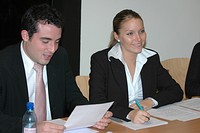
The purpose of this course is to help student's gain greater skills and confidence in managerial communication. The course will provide opportunities to polish communication skills through active participation - both individual and in groups - in different managerial contexts. The course will be highly participative.
First Semester
Second Semester

Des conférences, ateliers et séminaires se tiennent régulièrement en marge des principaux cours.
Les sujets couverts sont conçus pour délivrer la meilleure formation dans les domaines qu'ont à gérer au quotidien les organismes internationaux, notamment :
Ils sont présentés par des experts, consultants et dirigeants spécialisés dans les différentes opérations et réputés pour leurs compétences et leur grande expérience professionnelles.
Intervenants réguliers :

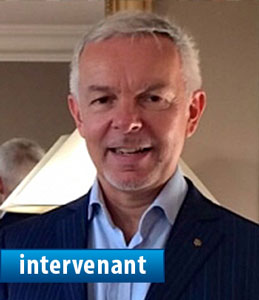





Hospitality managers are charged with making strategic and proactive decisions to increase occupancy rates and total revenue for their properties.
Applying a systematic process to such decision-making can increase their success.
This certificate program in hotel revenue management, developed by renowned revenue management expert Dr. Sheryl Kimes of Cornell’s School of Hotel Administration, provides a holistic view
of the application of hotel revenue management concepts and practices to the hospitality industry.
The courses focus on several high-impact drivers for maximizing revenue: forecasting and availability controls, pricing and distribution channel management, overbooking and group management, and non-traditional revenue management applications. Each course explores a topic in depth, with particular emphasis on the role of strategy in effective revenue management and the practical application of tools and techniques in the hospitality setting.
Implementing a revenue management strategy can be one of the most important revenue-generating initiatives available to a hotel, significantly increasing room revenue and profits. This course provides an overview of revenue management applications to the hotel industry designed to inspire a strategic shift to managing revenue per available room (RevPAR).
Revenue management is a systematic process designed to increase revenue by selling the right room to the right person at the right time for the right price. In addition to evaluating different pricing models and applying duration-management strategies, this course provides a foundation for more advanced revenue management courses in forecasting, group management and overbooking, pricing strategy, and application of revenue management techniques to other hospitality-related industries including spas and athletic facilities.
Participants who complete this course will be able to:
All successful revenue management strategies are based on the ability to forecast demand accurately and control room availability and length of stay.
This course explores the role of the forecast in a comprehensive revenue management strategy, including the selection of the best type of forecast and the impact of forecasting on other functions such as labor scheduling and purchasing. It presents a step-by-step approach to the mechanics of creating an accurate forecast. Participants learn how to build booking curves; account for “pick-up”; segment demand by market, group, and channel; and calculate error and account for its impact. The course also explores the impact of availability controls, including length-of-stay management, on revenue management and how they can be leveraged.
Participants use Microsoft Excel to practice forecasting and availability control techniques.
Participants who complete this course will be able to:
Pricing is one of the most powerful tools a hotel can use to increase revenue. This course teaches you how to set the right prices, develop rate fences (differentiate prices by customer type), and use multiple distribution channels to manage price more effectively. You’ll learn about the impact of variable pricing and discounting on revenue management in the context of price elasticity, optimal price mix, perceived fairness, and congruence with positioning and sales strategies.
Channel management is an essential tool for controlling differentiated pricing, maintaining rate fences, and increasing revenue. You’ll explore various approaches to managing distribution channels including direct sales, agencies, the Internet, and opaque pricing channels.
Finally, discussions of best practices and industry case studies help you extend and contextualize your learning experience.
Participants use Microsoft Excel to practice pricing and distribution-channel-management techniques.
Participants who complete this course will be able to:
Businesses that accept reservations must cope with the problem of no-shows: customers who make a reservation but fail to honor it. Hotels can protect themselves against revenue lost from no-shows and generate increased revenue by overbooking. This course teaches you how to strategically overbook and how to manage issues associated with overbooking, as well as how to evaluate groups and determine which rates to charge.
This course explores the components of a successful overbooking strategy including no-show forecasting, no-show rates, arrival uncertainty, pricing policies, and cancellation forecasts. It explores the risks of overbooking and presents strategies to minimize costs and mitigate customer impact.
To fully realize your property’s revenue potential, you must be able to manage group reservations. This course teaches you how to create a group forecast and explores yieldable and non-yieldable business and incremental group costs and revenue opportunities. It introduces models to calculate displacement costs and contribution margins to determine which groups are most profitable.
Participants who complete this course will be able to:
Revenue management can be applied to any industry with relatively fixed capacity, time-variable demand, and perishable inventory. This course teaches you how to apply revenue management concepts and practices to hospitality-related industries such as restaurants, meeting spaces, spas, and golf facilities. You’ll learn a step-by-step process to develop, implement, and monitor a revenue management strategy to maximize top-line revenue.
Participants who complete this course will be able to:

The purpose of this course is to provide students with the knowledge and experience to execute a market and feasibility study for a hotel project and prepare the valuation of a hotel property.
The course will be based on the execution of real-life case studies. The students will organize themselves in groups of four or five for each of the case studies. At the end of the first semester, each group will be required to present a complete market and feasibility study and at the end of the second semester, a complete property valuation.
During the class sessions:
A considerable amount of fieldwork is necessary for the successful completion of this course.
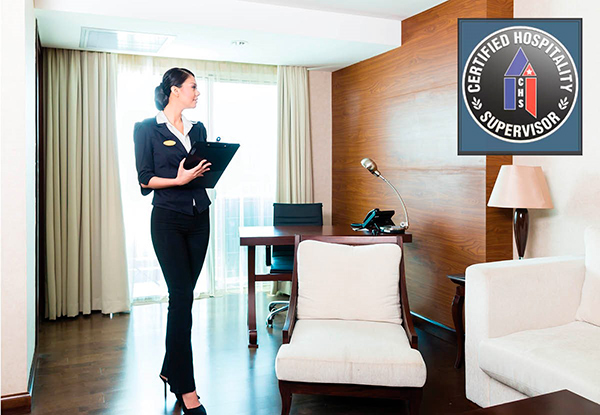
This course is designed to provide students with the principles of supervision as they apply specifically to the hospitality industry.
The purpose is to give students elementary knowledge & practice of management issues, including recruitment, training, performance evaluation, supervisory concerns, effective communication.
The students will learn & practice in class different techniques to be ready to face line-manager responsibilities in the first years of their career in the Hospitality Industry.
1. Identify fundamental supervisory responsibilities.
2. Explain the steps that supervisors can take to speak effectively on the job.
3. Describe how supervisors work with the human resources department to recruit new employees.
4. Explain the function of training within an organization and the supervisor's role in training.
5. Forecast business volume using the base adjustment forecasting method and the moving average forecasting method.
6. Distinguish coaching from counseling and disciplining.
7. Identify the components of a progressive disciplinary program.
8. List important laws and legal concerns that affect hospitality supervisors.
9. Describe issues supervisors should be aware of as they assume the role of team leader.
10. Explain how supervisors can increase employee participation in department activities.
11. Identify steps supervisors should follow during a meeting with employees in conflict.
12. Distinguish high-priority interruptions from low-priority interruptions, and summarize strategies for dealing with the latter.
13. Describe actions that supervisors can take to minimize employee resistance to change.
Explain why it is important for supervisors to take control of their personal development, and describe how to execute a career development plan.
At the end of the session, students should be in the position to:
When speaking about innovation, there are numerous factors to be considered by the organization, but what are the factors and how do they affect the process of innovation and entrepreneurship?
This course will explain how and why most of the most significant inventions of the last two centuries have not come from flashes of inspiration, but from communal, multi-layered and endeavour -one idea being built into another until a breakthrough is reached.
In this course we will see that many of the traditional approaches to management and, specifically, hospitality management have to change and new approaches need to be adopted. Increasing managers, culinary managers and those who work for them are no longer in the same location. Often complex management relationships need to be developed because organisations try to produce complex products and services and do so across geographic boundaries.
Finally, this course emphasises the need to view innovation and entrepreneurship as a management process. We need to recognise that change is at the heart of it. And that change is caused by decisions that people make.
This course is divided in five main parts:
The hospitality industry has some general operating characteristics that render it relatively more vulnerable. Therefore accounting and administrative controls are necessary to ensure fiscal accuracy and operational efficiency.
The class will be divided in groups of 3 or 4 students. Each group will have to choose a corporate company of one sector of the industry (Hotel, Restaurant, Casino, Cruise,...), develop the ideal control tool kit with specifics and to send your work to the company.
The course deals with ethical issues arising from the operation of business enterprises in today's global political economy. By applying the tools of ethical analysis to a variety of real-life case studies, students will be exposed to issues such as human rights, political involvement by business, foreign production (including sweatshops), export of hazardous products, deceptive marketing techniques & bribery, religious & social discrimination, the cultural impact of multinational enterprises (MNEs) environmental issues, sustainable development, triple bottom line reporting, business guidance and control mechanisms etc. By the end of the course, students should have developed an organised, self-aware approach to decision making that can offer them important assistance when confronting difficult ethical dilemmas.
When speaking about financial planning and project development, there are many internal and external factors that should be taken into consideration to make sound projects and make sure that we are assessing the right information, but what are the factors to be taken into account and how do they affect the financial planning and project development process?
In this course we will see how a manager and entrepreneur can use some of the information obtained through financial statement analysis for financial planning and control of the firm's future operations. Well-run companies generally base their operating plans on a set of forecasted financial statements.
The financial planning process begins with a sales forecast for the next few years. Then the assets required to meet the sales target are determined, and the decision is made concerning how to finance the required assets. At that point, income statements and balance sheets can be projected, and earnings and dividends per share, as well as the key ratios, can be forecasted.
Once the "base case" forecasted financial statements and ratios have been prepared, managers and entrepreneurs want to know: 1. How realistic the results are, 2. How to attain the results, and 3. What impact changes in operations would have on the forecasts. At this stage, which is the financial control phase, the firm is concerned with implementing the financial plans or forecasts, and dealing with the feedback and adjustment process that is necessary to ensure that the goals of the firm are pursued appropriately.
This course is divided in ten main parts:
The purpose of this course is to give students a thorough knowledge & practice in conflict management, by identifying its components and conflict management strategies.
Moreover, it will enable students to develop their personal leadership and acquire different management strategies to be able to lead their future teams in the Hospitality Industry
A focus on interpersonal relations with the Transactional Analysis techniques will be made.
This course will be help students to understand how to solve problems in a caring and challenging environment. Self direction and interaction among class members will be encouraged, and students will live a learning experience.
At the end of the session, students should be in the position to:
- Manage conflicts with assertiveness
- Communicate effectively, showing management exemplarity
- Adopt a coaching attitude
- Lead meeting effectively
- Manage their time
- Write some action plans enhancing performance in the Hospitality Industry
- Present the results of their personal development and career plan
- Express their personal leadership


This course will give students a good understanding of the purchasing function in the multi-unit food service operations. Students will learn about the ways in which value can be added by members of the food service distribution channel, the necessary elements of purchase specifications, and how to select and evaluate distributor partners.
The course also covers ethics, group purchasing, electronic purchasing methods, and food safety and defense issues.
This course shows students how to keep every area of a hotel property running smoothly.
The course takes a systems approach to hospitality facilities issues, while also providing a summary based on functional spaces within a property.
The instructor features the latest information on facilities management and design issues.
Students learn how technology can streamline operations procedures, how to balance environmental concerns with guest satisfaction, and how to communicate effectively with hotel engineering personnel.
Provides hospitality managers and students with information they need to know to manage the physical plant of a hotel or restaurant and work effectively with the engineering and maintenance department.
The student must complete a comprehensive final examination.
Hospitality Facilities Management and Design, Third Edition, by David M. Stipanuk.


An understanding of the built environment and its role in supporting hospitality businesses is vital for a successful hotel manager, investor, or developer. This short, intensive course provides a management overview of the problems and opportunities in the design of hotels of all types. We will be covering the steps in the planning and design process and factors that contribute to a successful outcome; space planning and design criteria for major hotel functional areas including guestrooms, lobbies, restaurants and bars, meeting space, and back of house areas; architectural plan reading and analysis for design effectiveness; and renovation planning. The goal is for every student to leave the course with a basic understanding of what physical factors contribute to a successful hotel operation, how much space to allocate to major functions, and how to interpret and respond to information presented by professional designers.
The course will combine lecture, discussion, and exercises for both individuals and small groups. All students will be expected to attend all class sessions.
Each student will be assessed based on demonstrated mastery of the course material through in-class exercises and possibly evening assignments, as well as in-class participation and professionalism (attendance, on-time arrival, respect and engagement with fellow students and the instructor).
There will be assigned reading from Penner, Adams and Robson (2012), Hotel Design, Planning and Development, London: W.W. Norton. Other course materials including architectural plans will be made available as handouts in class. Lecture slides will be made available in digital form to all students prior to class to facilitate note-taking.
No drawing is required in this course. Students will need to bring a calculator to each class session and may find value in having colored pens for the plan analysis portions of the course.
Reading assignment prior to course start: Penner, Adams and Robson - Chapter 14
The Development Process and Design as a Strategic Tool for Hotels
Overview of Stages and Players in Hotel Development and Design Process
The Psychology of the Servicescape
EXERCISE: Observing Behavior in Public Spaces
How Brands Use Design
Design Characteristics of Specific Hotel Types
RECOMMENDED READING: Penner, Adams and Robson – Chapters 2 through 11
Hotel Programming and Space Allocation: How Big Should a Hotel Be?
Introduction to the Programme Document
Determining Space Needs
EXERCISE: Space Calculations for a New Hotel
Measures and Metrics for Space Planning Efficiency
EXERCISE: Is This Floor Well-Planned?
RECOMMENDED READING: Penner, Adams and Robson – Chapter 15
Key Interior Design Considerations for Major Hotel Spaces
Guestroom Design
EXERCISE: Designing a Guestroom
Lobby Design
Food and Beverage Design
EXERCISE: What's Wrong with This Restaurant?
Meeting Space Design
Back of House Design
RECOMMENDED READING: Penner, Adams and Robson – Chapters 16 through 18
Hotel Plan Analysis and Renovation Planning
How to Assess Hotel Floor Plans
EXERCISE: Reviewing a Set of Hotel Plans
Project Management and Planning Tools for Renovations